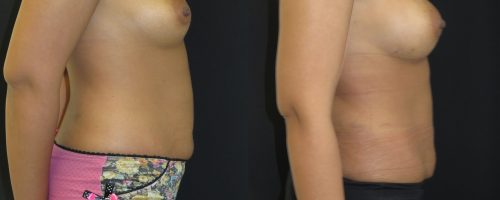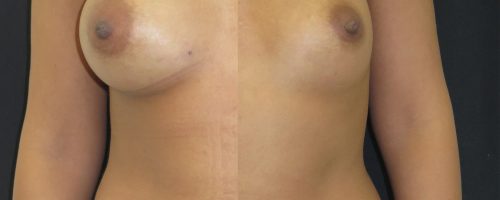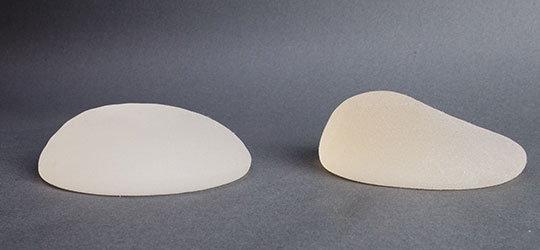Breast lipofilling is a major improvement in the field of esthetic and reconstructive breast augmentation. It allows the patient to obtain a natural breast augmentation with her own fat, without scars and without implants (and reaction and/or complications that may come with a foreign body). In addition, the patient benefits from a liposuction that removes unwanted fat from from other areas of her body.
Breast lipofilling represents a significant advancement in breast esthetic and reconstructive surgery.
- No scars
- Breasts feel and look more natural
- No foreign body (breast implant)
- Benefits from combined liposuction
- Outpatient procedure possible
BREAST LIPOFILLING OVERVIEW
This information sheet is issued by Dr. Vincent Nguyen, board-certified plastic surgeon in Paris, specialized in breast lipofilling procedures. He will evaluate your needs and discuss your options to achieve the best natural results.
It provides all the information about the surgery, scars, recovery, before and after comparison photographs, Social Security coverage and the costs of breast augmentation with lipofilling.
What is lipofilling?
Lipofilling is an advanced surgery technique. It uses the patient’s own fat, harvested through liposuction, and reinjects it to permanently fill in hollows, or create volume in other parts of the body. The surgeon performs thus an autologous graft of adipocyte cells.
This technique is also called: lipostructure, liposculpture, lipomodelling, micro-fat grafting, fat injection, autologous fat transfer, fat grafting, autologous adipocyte graft, autologous fat grafting… they are all synonyms.
What’s the advantage of lipofilling in breast augmentation?
Lipostructure was first used in breast reconstruction (also called lipofilling or lipomodelling). With this experience and efficiency in breast reconstruction, lipofilling has been used in other parts of the body (face, hands, limbs…), including esthetic breast augmentation.
Fat transfer in the breast is recognized as being reliable and predictable when performed by a board-certified plastic surgeon with experience in breast lipofilling.
What are the indications for breast lipofilling?
Breast lipofilling is for patients who need:
- A modest breast augmentation
- To restore shape and volume in their breast after pregnancy, breastfeeding or weight loss…
- To improve the shape, the curve and the feel of their breast augmentation with implant (hybrid breast augmentation)
Breast augmentation with lipofilling requires enough excess body fat to be removed from other parts of the body for one or two lipofilling sessions.
Very slim patients are not good candidates for a breast lipofilling.
What are the major benefits of breast augmentation with fat injection?
- Breast augmentation with lipofilling uses your own fat to add volume to your breasts in a very natural way and with a perfectly natural outcome.
- Once the graft has settled, the result is permanent and the size of your breasts will vary like any other fat in your body.
- The breasts feel natural and soft to the touch.
- It’s a scarless breast augmentation.
- Breast lipofilling is an autologous and 100% natural procedure as it uses the patient’s own fat.
- As the procedure doesn’t involve a foreign body, there is no implant-related risk (scar, capsular contracture, implant rejection…)
- Inharmonious fatty areas of the body are treated and sculpted as part of the lipofilling procedure as unwanted fat is harvested.
- The procedure doesn’t only benefit breasts but the whole body as it enhances its overall proportions, remodeling body contours.
THE PRINCIPLES OF BREAST AUGMENTATION
What’s the history of lipofilling?
The method of harvesting fat that is so popular nowadays, has been considerably developed and improved over the years. It is now an established technique with predictable results. For 30 years, the techniques of harvesting, purifying and reinjecting fat have developed and it is now a simple, reproducible and reliable procedure. Dr Coleman, an American plastic surgeon, pioneer of the procedure, has given his name to a lipofilling technique called “the Coleman technique”.
THE STEPS OF A BREAST AUGMENTATION
BEFORE BREAST AUGMENTATION WITH LIPOFILLING:
- Two preoperative consultations with a board-certified plastic surgeon will be conducted as well as a consultation with an anesthetist.
- You will get a mammography or/ and an ultrasound.
- Before and after comparison photographs will be taken.
- A post-surgical compression bra, wireless and front opening, will be prescribed.
- Preoperative instructions are as follow:
- Quit smoking at least one month before the surgery and up to 1 month after the surgery to avoid any complication or necrosis risk.
- Discontinue any anti-platelet or blood-thinning medication 15 days before the surgery.
BREAST AUGMENTATION WITH LIPOFILLING: THE PROCEDURE
- It is, most of the time, performed under general anesthesia, depending on the number of areas where the fat is to be removed.
- The patient is in a sit-up position to create an optimal result.
- It lasts about 2 hours depending on the volume of fat to harvest and inject.
- Dr Vincent Nguyen performs liposuction and lipofilling himself on both breasts.
The final result is visible 6 months after the procedure but the change is obvious immediately after the procedure. But, as not all the fat will survive the transplant, it is sometimes necessary to perform a second procedure to achieve the expected result.
AFTER BREAST AUGMENTATION WITH LIPOFILLING:
- Breast lipofilling is not a painful procedure. Only light analgesics will be prescribed.
- Patients may go home the following day or even the same day.
- Swelling and bruising appear on the breasts and on the collection sites the following days.
- No nursing care is required after the procedure.
- You may have a shower the following day.
- You will have to wear a contention bra for 4 weeks night and day as well as a compression garment on the areas where liposuction is performed, to help remodel contours.
- Most patients may go back to work after 5 to 10 days depending on the nature of their job.
- You may resume physical activities after 4 weeks.
- Follow-up consultations with Dr Vincent Nguyen will be planned (1 week, 1 month, 3 months, 6 months and a year after the surgery).
BREAST AUGMENTATION WITH LIPOFILLING: PRICE AND COST
- As breast augmentation with lipofilling is an esthetic procedure, there is no coverage by Social Security or Health Insurance Company.
- The costs may vary depending on the patient, on the expected augmentation and on the volume of fat to be harvested, on the location of the surgery, on the length of the procedure and other related expenses. The costs may vary from …. To … (find all the costs on this website).
- Part of the cost of the procedure may be covered by Social Security or some Health Insurance Companies in case of breast deformity or asymmetry. The pathology must be confirmed by the Social Security Medical Advisor who delivers a prior agreement.
- Make sure to find a board-certified plastic surgeon specialized in breast augmentation who will evaluate your needs, discuss your options and guide you to achieve what is the best option for you.
BREAST LIPOFILLING FAQs
What are the alternatives to breast lipofilling?
- If breast lipofilling can’t be an option for you, you may consider breast augmentation with implants for a larger augmentation and different shape.
- Both procedures, breast augmentation with lipofilling and with implants, may be combined. It is called hybrid breast augmentation. (see information sheet)
What other procedures may be combined with breast lipofilling?
It may be combined with a breast lift (that comes with scars) if the patient’s breasts are sagging after pregnancy, breastfeeding or weight loss. (see information sheet)
Is breast lipofilling permanent?
All the fat that survived the transplant after 3 months will be permanent, but the fat will be affected by weight gain and weight loss as in any other part of your body.
What are the disadvantages of breast augmentation with lipofilling?
- The volume of injected fat depends on the fat tissue stock. Some very slim patients may not have enough excess fat to have a succesful lipofilling. Dr Vincent Nguyen will evaluate your needs and the quantity of fat that can be removed and will discuss your options.
- As the procedure involves autologous fat graft, a certain amount of fat is absorbed by the body. After 3 months, up to half the fat injected may have been reabsorbed.
- Breast lipomodelling is not for patients who want a large breast augmentation as it only modestly enlarges the breasts.
- A second lipofilling procedure will be necessary if the patient wants to augment her breasts more significantly, the size of an implant (300cc).
- The final outcome is not entirely predictable as fat is absorbed by the body. So, if the patient wants to have larger breasts, implants should be considered.
Are there other indications for breast lipofilling?
- Breast lipofilling may be performed in case of congenital defects or breast or chest deformity (Poland syndrome, breast aplasia, tuberous breast and pectum excavatum): see mammary abnormalities.
- Breast lipofilling may also be performed in breast reconstruction after breast cancer. See breast reconstruction
Is there a link between breast lipofilling and breast cancer?
No.
With the benefit of 25 years of hindsight, many studies have shown that lipofilling is a safe procedure that doesn’t increase the risk of breast cancer.
However breast lipofilling doesn’t prevent the patient from developing breast cancer.
In the past, lipofilling was not performed on women over 35 as microcalcifications (due to the graft) could affect the interpretation of ultrasound imaging.
Nowadays radiographic changes following fat grafting are easily differentiated from breast cancer.
If breast lipofilling is performed by a board-certified plastic surgeon, there won’t be any diagnostic issue for the radiologist. The calcifications can’t confound mammography and routine breast cancer surveillance.



